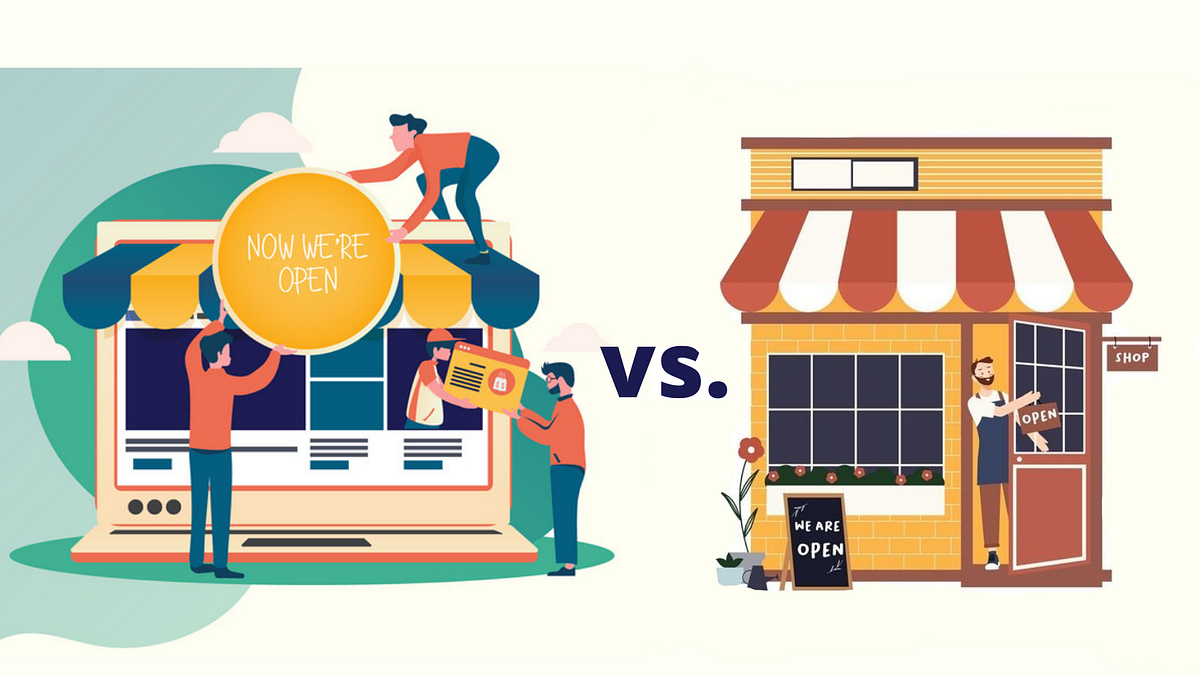E-commerce vs. Brick-and-Mortar: Which Business Model is Right for You?
Introduction
In the rapidly evolving world of business, choosing the right model for your venture is critical. Two major options dominate the market: e-commerce and brick-and-mortar businesses. Each has its unique advantages, challenges, and considerations. This comprehensive article will explore both models in depth, helping entrepreneurs make informed decisions.
Understanding E-commerce and Brick-and-Mortar Businesses
What is E-commerce?
E-commerce refers to businesses that operate online, selling products or services through digital platforms. These businesses leverage websites, mobile applications, and digital marketing to reach customers globally.
What is a Brick-and-Mortar Business?
Brick-and-mortar businesses operate from physical locations, allowing customers to visit, interact with products, and make purchases in person. These businesses rely on foot traffic and traditional marketing strategies.
Key Differences Between E-commerce and Brick-and-Mortar
| Feature | E-commerce | Brick-and-Mortar |
|---|---|---|
| Startup Costs | Lower, no physical space required | Higher, rental and maintenance costs |
| Operating Costs | Lower, automated systems | Higher, employee salaries and utilities |
| Customer Reach | Global reach | Limited by geographical location |
| Convenience | 24/7 accessibility | Limited by store hours |
| Customer Interaction | Virtual, through chat and emails | Direct, face-to-face interaction |
| Marketing Strategies | SEO, social media, PPC ads | Local ads, signage, direct marketing |
| Scalability | Easier, digital expansion | Requires additional physical locations |
Advantages and Disadvantages of E-commerce
Advantages of E-commerce
- Low Startup Costs – No need for physical stores reduces initial investment.
- Wider Customer Base – Businesses can reach customers worldwide.
- Convenience – Customers can shop anytime, anywhere.
- Data-Driven Insights – Businesses can track customer behavior and optimize marketing.
- Scalability – Easier to expand and reach new markets.
Disadvantages of E-commerce
- High Competition – Many online businesses competing for attention.
- Trust Issues – Customers may hesitate due to fraud risks.
- Technical Challenges – Requires expertise in website maintenance and security.
- Shipping and Logistics – Managing deliveries and returns can be complex.
- Customer Service Limitations – Lack of personal interaction may impact customer relationships.
Advantages and Disadvantages of Brick-and-Mortar
Advantages of Brick-and-Mortar
- Physical Interaction – Customers can see, touch, and try products before purchasing.
- Stronger Brand Presence – Physical stores build credibility and customer loyalty.
- Immediate Fulfillment – No shipping delays; customers take products instantly.
- Local Customer Base – Builds a strong community presence.
Disadvantages of Brick-and-Mortar
- High Overhead Costs – Rent, utilities, and staffing increase expenses.
- Limited Reach – Business is restricted to a specific location.
- Fixed Operating Hours – Cannot serve customers 24/7.
- Inventory Management Challenges – Requires large upfront stock investment.
Choosing the Right Model for Your Business
Consider Your Target Audience
- Tech-savvy customers? Opt for e-commerce.
- Local customers who prefer in-person shopping? Brick-and-mortar is better.
Evaluate Your Budget
- Limited budget? E-commerce has lower startup costs.
- Sufficient funds? Brick-and-mortar can provide a stronger brand presence.
Consider Your Product Type
- Digital products or easily shippable items? E-commerce is ideal.
- Products requiring hands-on experience? A physical store is better.
Assess Market Trends
- High demand for online shopping? E-commerce is advantageous.
- Strong local community presence? A brick-and-mortar store may thrive.
The Future of Business: Hybrid Model
Many businesses now adopt a hybrid model, combining both e-commerce and brick-and-mortar operations. This approach offers the best of both worlds, ensuring convenience and customer engagement.
Benefits of the Hybrid Model
- Increased Sales Channels – Serves both online and offline customers.
- Brand Trust – Physical stores enhance credibility while e-commerce expands reach.
- Better Customer Experience – Customers can choose their preferred shopping method.
- Improved Data Collection – Insights from both in-store and online interactions optimize marketing strategies.
Conclusion
Choosing between e-commerce and brick-and-mortar depends on multiple factors, including budget, target audience, and product type. While e-commerce offers scalability and cost efficiency, brick-and-mortar stores provide a tangible shopping experience. The hybrid model is a growing trend, blending the advantages of both. Understanding these business models helps entrepreneurs make strategic decisions for long-term success.


